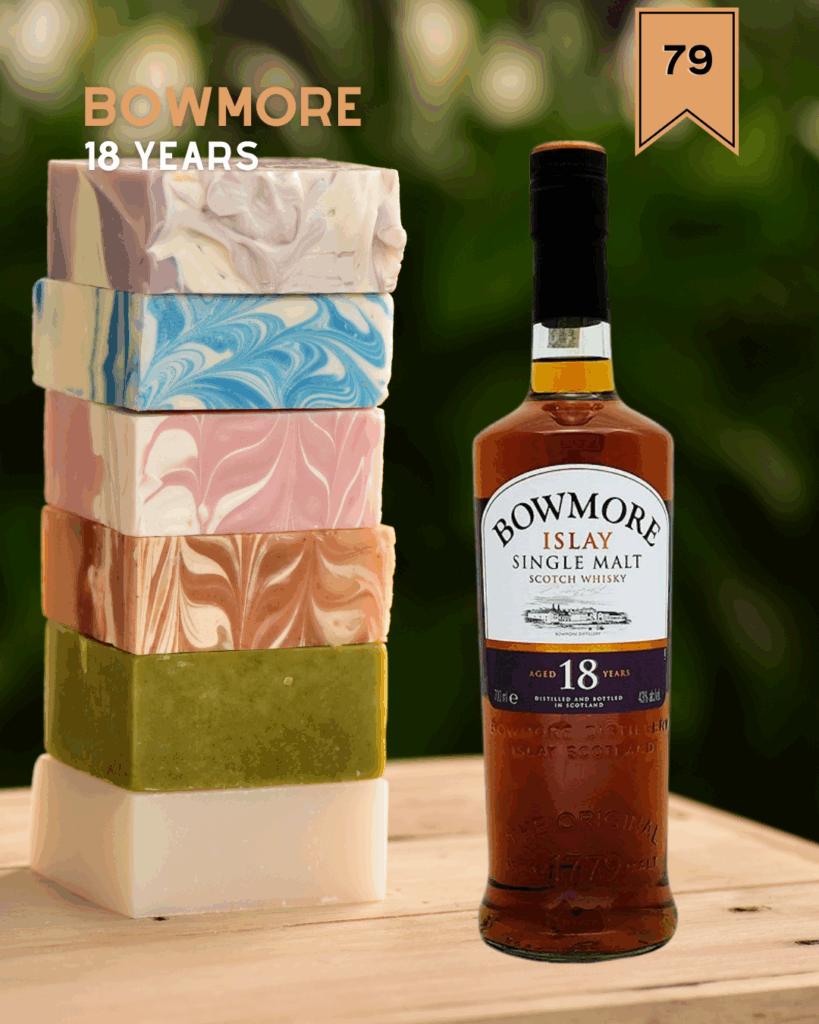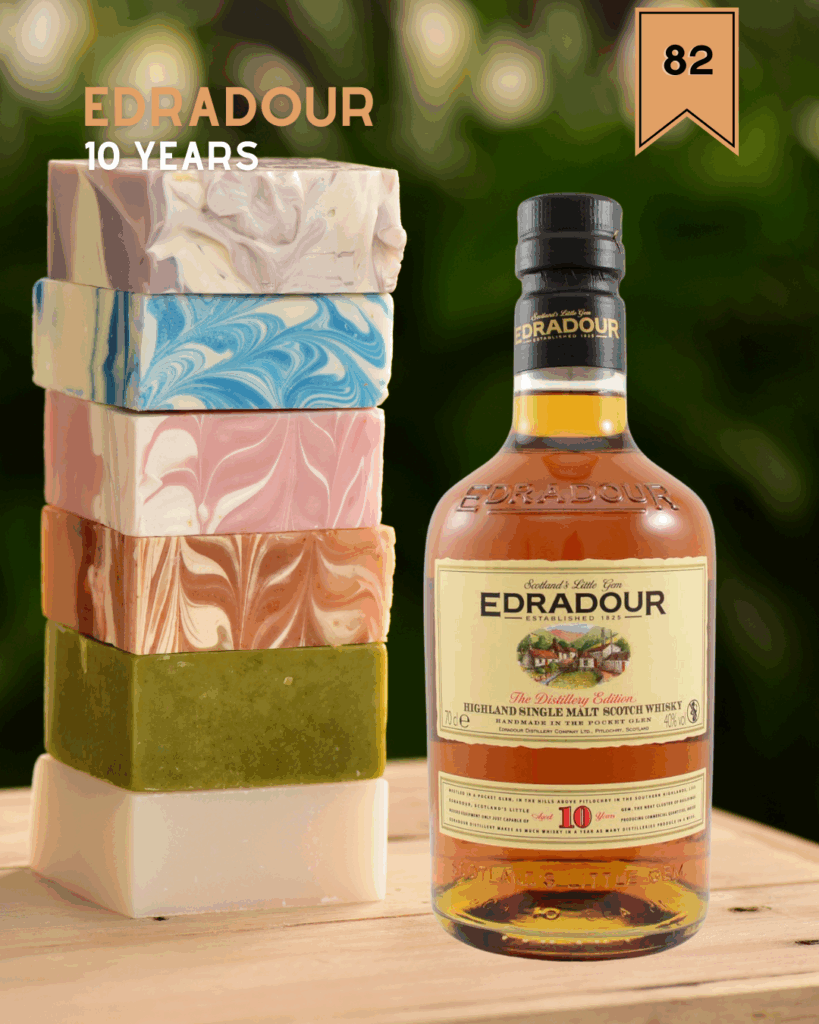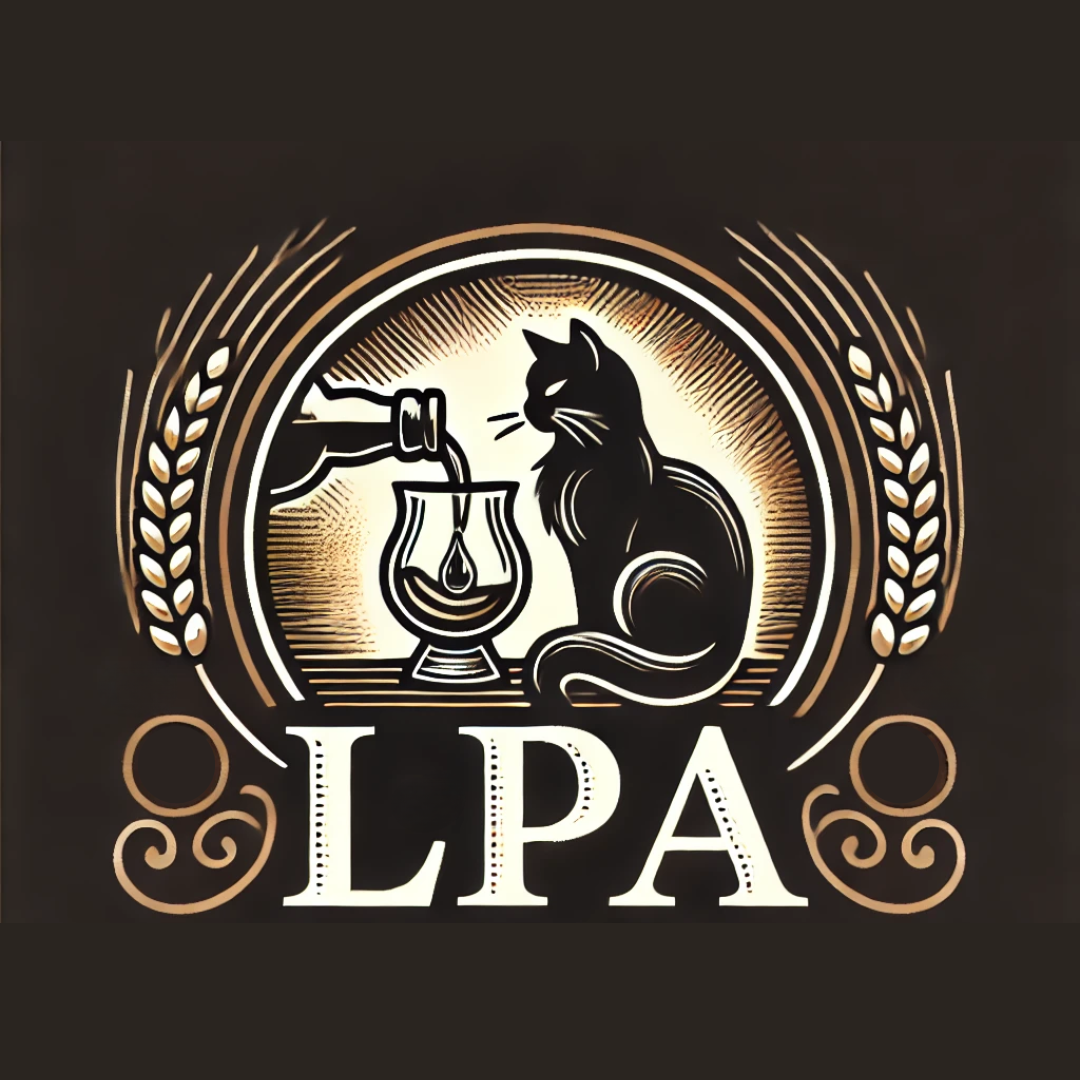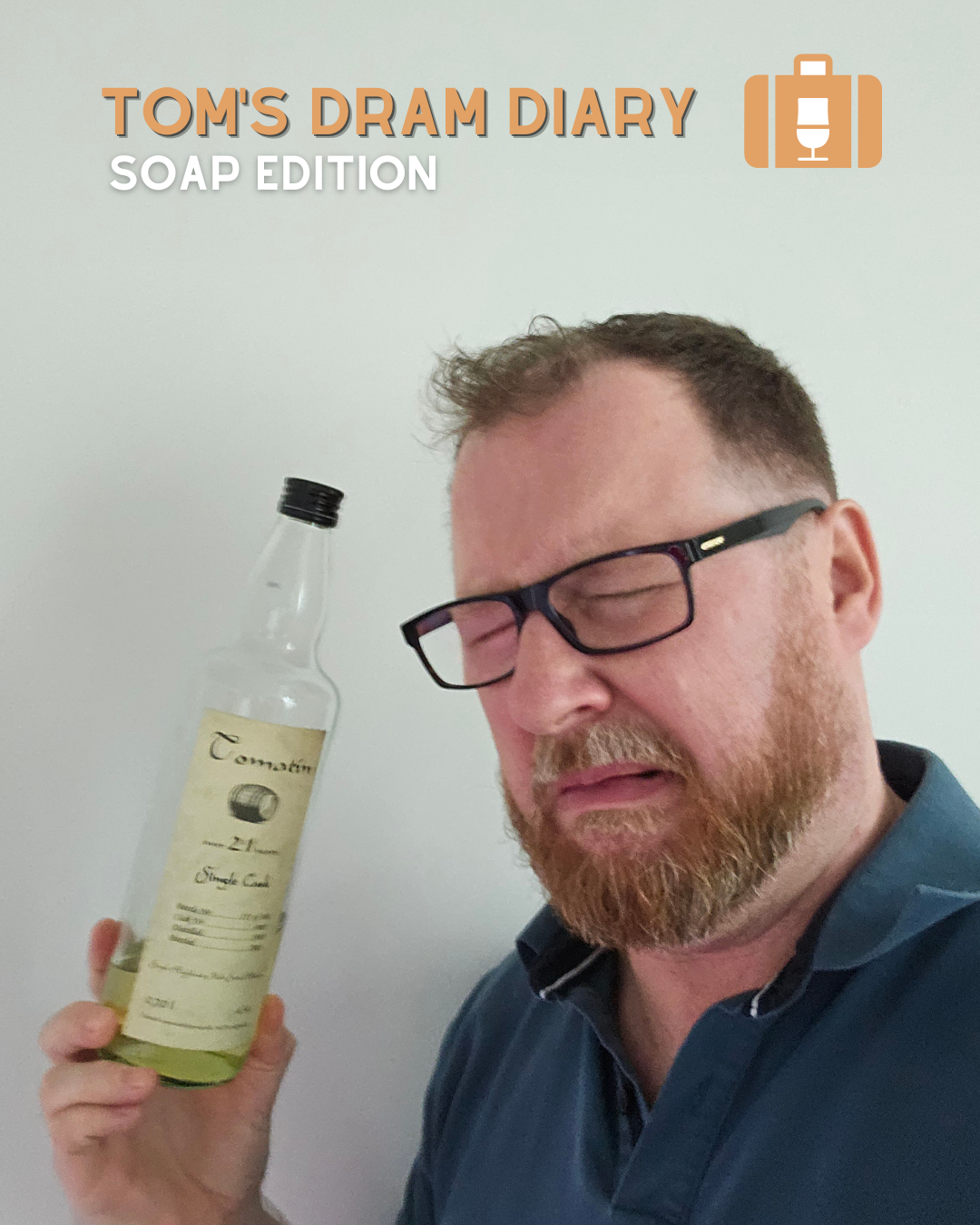Soapy whisky – tasting the phenomenon
Every whisky enthusiast probably knows the story which I am about to introduce: that moment when you’re savouring what should be a beautiful whisky, only to be hit with notes that remind you of your grandmother’s lavender soap. My dear granny had these big blocks of soap in every room that had its own sink, and the smell is unforgettable. I never actually tasted it, but there is whisky out there that must come close to the experience. I have seen grown men cry over bottles that were supposedly good on nose, perhaps even taste fine, only to have this terrible finish that makes you blow bubbles. Where does it come from, and what are modern examples of a style that is now creating a category for itself?
The Bowmore Chronicles
If there’s one distillery that exemplifies the soapy whisky phenomenon, it’s Bowmore. There was a particularly challenging period in the 1980s when the distillery produced what can only be described as whisky-soap. I still remember tasting a 1985 single cask bottled by, well, I believe it was Dewar Rattray but I cannot find it in the Whiskybase. It was a shocking experience, because who in their right mind would bottle such a whisky? In fact, the famous vintages are not so many indeed, if you check the entries in Whiskybase. The official and independent bottlings were probably there for educational purposes.
What is fascinating is how divided the whisky community remains about these bottles. Those familiar with Bowmore’s older character seem to appreciate the quirky, soapy elements as part of the distillery’s personality. Modern whisky drinkers, however, often find these notes too bizarre and unsettling. The Bowmore situation perfectly illustrates how quickly things can go wrong in whisky production, and how long those mistakes can haunt a distillery’s reputation. It also demonstrates that soapy characteristics aren’t necessarily inherent flaws in a distillery’s approach – they are often related to specific production periods or batches. Part of me appreciates that these challenging expressions exist. They remind us that whisky production is genuinely complex. When everything goes right, we get liquid gold. When things go slightly wrong, we get fascinating lessons in chemistry. For those curious about experiencing soapy whisky firsthand, I suggest starting with some of those infamous 1980s Bowmore if you can find them. Just be prepared for an educational experience. And have a backup dram ready.
The science behind soapy whisky
I flew in the assistance of my friend Claude (AI) to describe some science behind soapy whisky. According to the information amassed, the culprits are fatty acids – specifically lauric acid and palmitic acid. These compounds naturally emerge during fermentation and get concentrated during the traditional pot still distillation that defines Scottish single malt production. Lauric acid produces those distinct bay oil and soap-like notes, while palmitic acid creates waxy, creamy characteristics that many tasters find off-putting. It’s not that distillers are accidentally dropping bars of soap into their mash tuns – these compounds develop naturally as part of the complex biochemical processes that transform barley into spirit, and eventually whisky.
The real trouble starts during distillation. In traditional Scottish pot still production, these fat-soluble compounds can literally stick to the copper stills. If they’re not properly purged through careful management of the foreshots, they contaminate subsequent batches. Even the most experienced Scottish distillers can find their whisky developing soapy characteristics if this process goes wrong. We will try to prove this with the samples of today. We have a Bowmore on the table, but also an Edradour (definitely also known for soap) and a Tomatin (not at all).
The use of copper stills is not just about tradition. Copper actively removes sulphury, cereal, and feinty aromas during distillation. The copper contact during that crucial first wash still distillation is particularly important for preventing soapy notes. Different Scottish regions developed their own approaches. Highland distilleries often employ taller stills and specific lyne arm angles that increase copper contact and reflux, naturally reducing problematic compounds. Speyside producers frequently use shell and tube condensers that maximize copper contact. The management of “feints” – the final fraction of spirit distillation – requires real skill. These contain many of the compounds that can turn soapy. I’ve heard distillers describe how feints progress from pleasant mushroom and cereal aromas to increasingly problematic notes.
Enough talk for now, let us put some serious soapy whisky on the table! Happy accidents, lack of interest during the production process, or just bad luck. And in 2025: intentional creations? I think we found a sample in every category.

Bowmore 18 years old, bottled at 43 % abv
First things first: The label shows no “frame” around the number 18, which makes it possible to date this bottle to 2007. That would make this Bowmore a mixture of at least 1989 stock, maybe older casks included. The tail end of the soapy period. Let’s dive in!
Upon Sipping: Nothing wrong with the nose, which shows a good integration of sherry notes and peat on its way to turn into something tropical. It is indeed bordering on more classic cherries and strawberries with already latent hints of papaya and mango. By all means a fantastic aroma. On repeated raising of the glass and bringing it to the nose, some lavender breaks loose and puts a layer over the general characteristics. Washing liquids for the clothes too, eventually. Oh dear. Taking a sip, this floral note continues on the palate, like licking rose petals. And then, finally, when I swallow the soap is strong. It is like getting shampoo in your eyes as a kid, and while you scream for mommy or daddy to help it rinse, some comes in your mouth … and that is how it tastes. It remains as a mentholated drop long after the finish fades away. Interestingly enough, the peat smoke seems to swirl around the proceedings, but does not feel integrated into the total DNA-strain of this Bowmore 18 years old.
Word to the Wise: Besides the nose, this has become a difficult drinking experience, that was maybe years ahead of its time, as it might fare better in 2025. Who knows? For me personally, it would be a huge challenge to finish the bottle.
Score: 79 points

Living Souls 40 years old blended Scotch whisky, bottled at 45,1 % abv
First things first: Batch 2 of the Living Souls 40 years old we linked to before in this blog. Matured in a refill sherry butt. With what I can find, I conclude this is more or less the same cask make-up, again including grain whisky from the Cambus Distillery. And … Glen Garioch. Remember, GG was under the same regime as Bowmore in the 1980s, and suffered the same soapy curse.
Upon Sipping: We taste this one head to head with the Bowmore 18 described above. Very interesting to see the big, BIG, contrast between the two. The blended Scotch is immediately much broader and complex. What we do recognize from the Bowmore, is the strong menthol, but here we get it on the nose straight away. Truly like opening a new tube of toothpaste. In essence, this is not a bad smell, I love to kiss my partner too when she brushed her teeth right before we go out to the cinema or a concert. Underneath the menthol is a fascinating combination of summer fruit and a light chlorine. In fact, batch 2 is really very identical to the debut batch. Freshly polished tiles in an all-inclusive resort in Turkey (where, with a bit of timing, I am when you read this, life is good). So, in any case, much more cleaning liquid with summery influences, compared to the liquid pod you through in your washing machine. When I return to the Bowmore, I pick up a lot of Asian spices all of a sudden. What a weird development in the glass for that one.
Let us sip from a 40 year old Scotch, believe it or not, not something we do every day. On the palate, it feels as if the taste is enveloped with a layer of film.
It feels very compact, and the taste remains concealed a little. Nice wood, soft fruits and no bother from soapiness yet. Of course, the Living Souls makes a clean exit – literally! With some water, the nose gets a tad tame, but the taste offers more fruit now. Smoky pineapple, sour candy and yes, a much more faint soapiness compared to the Bowmore.
Word to the Wise: This blend brings much more balance to the table. Instead of totally overruling and dominating your whisky, the soapy element is put to good use in the ensemble of casks used for this blend. This means you will notice it, but it does not outstay its welcome. With batch 2, I seem to pick up more fruit, and I can up the score just a little compared to batch 1. The Living Souls might one day well be remembered as pioneering and opening up a new genre in Scotch whisky: the floral, soapy category. Done like this, I can see added value in it. It is totally wacky!
Score: 85 points

Edradour 10 years old, bottled at 40 % abv
First things first: A fairly new edition of the trusted Edradour 10 years old, where people started to notice that the colour of the whisky had gradually become a lot darker. Indeed, the bottle proudly mentions the influence of oloroso sherry casks. And we know that owner Andrew Symington knows his sherry casks, so high expectations here!
Upon Sipping: I was actually seduced by the colour and for the first time in many years I bought a bottle of (official) Edradour. Bottled at 40 % abv is a shame though… Sticking my nose in the glass gives me a kick to the head. Edradour might well be the funkiest of the funky single malts. The oloroso has mingled with a strong scent of mushroom, wet earth and green mold on your sandwich. So weird to find this in your glass of whisky. The mushroom smells seems to support the feints cut-off theory for creating soapy notes. The nose is remarkably complex and entertaining, if you like it weird and off the beaten track that is. The taste is sweet and heathery, where the casks do some heavy lifting but the sulphury, acidic backbone of Edradour is always there. Such a delightfully un-commercial product. I love it for that, even though the light rubbery, green soap finish is less to my liking. It definitely is a style that Edradour has mastered.
Word to the Wise: What is interesting, is that in this bottle I get the soap. In recent years, Signatory and Dutch bottler Van Wees have released a steady stream of high abv single cask sherry Edradour. In those I never found a soapy off-note. Might the dilution be a problem here? In any case, an absolute singular take on single malt whisky from the Pocket Glen.
Score: 82 points.

Tomatin 21 years old, vintage 1980, bottled at 43 % abv by Whisky Wizard
First things first: How rare is Tomatin 1980? Well, there is one official bottling, one miniature, three bottles from Getränke Weiser at 23, 24 and 25 years of age (but all from the same “traveling cask”) and three releases by Whisky Wizard. Just 8 entries in Whiskybase. We taste cask 0005 bottled in 2003 but labelled as a 21 years old. Whisky Wizard produced 360 bottles, one of which I acquired on auction. The question is: did Tomatin produce soapy whisky in 1980?
Upon Sipping: The thing is, this Tomatin 1980 opens on a full blown fruit explosion. The whisky is as pale as a ghost, suggesting a refill cask with little life in it, and the fruits are different from what I am used to in older Tomatin. Lychees, peaches, stone fruit, white grapes, Riesling wine not even at Spätlase sweetness but Auslese. Lots of plums, freshly washed under the tap. Also some cat pee. Summer whisky. Taking a sip, the taste buds experience a light and very supple highland single malt, but when you swirl the liquid around over the palate, the more back to the throat you get, the more you will notice something is off. And then you swallow. It depends on the day you drink this, and where your palate is at that day, sometimes it hits hard, sometimes it is more modest. In any case, the type of soap experience that reminds me of that plaything we had. Bubble blowers. Or, when I was young, the bubble machine in the disco that filled your mouth with soap while dancing. Such a pity of the truly tremendous nose on this Tomatin. For that alone it reaches the 80 points mark. The taste is already sliding, and the finish really bad.
Word to the Wise: For the nose alone, I have kept this bottle in the cabinet, because it is truly a thing of beauty. When it comes to the soap, there are two possibilities. A glitch in the production that year at Tomatin? I don’t think that is probable. The aforementioned Tomatin by Weiser are one of the best I ever tasted. So, at the least, we have two opposite examples. Another option, which is always a risk when buying on auction, is that this bottle simply was not stored properly, and deteriorated in someone’s cabinet. But then again, would that not also affect the aroma? This Tomatin 1980 keeps me puzzled.
Score: 82 points.

